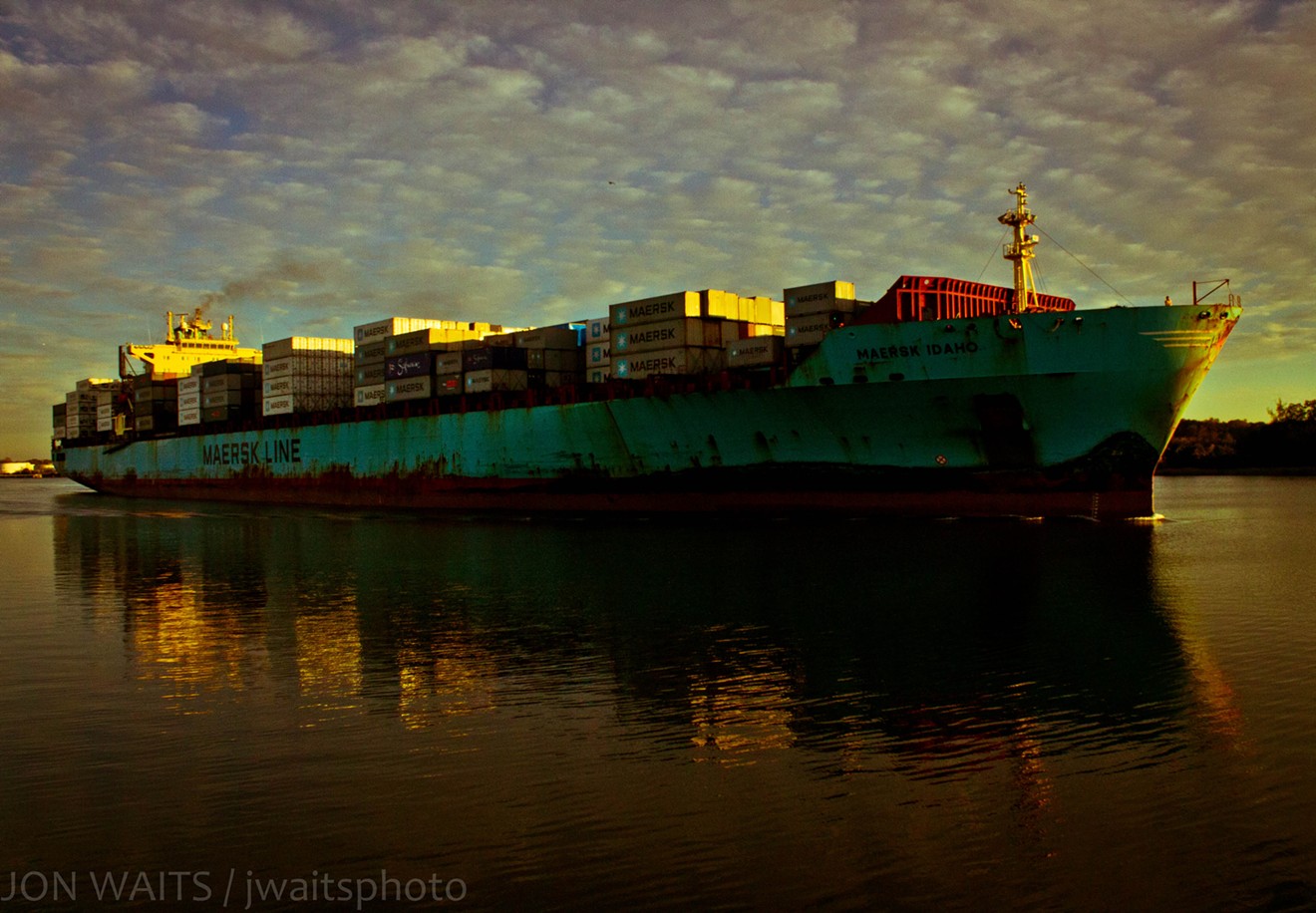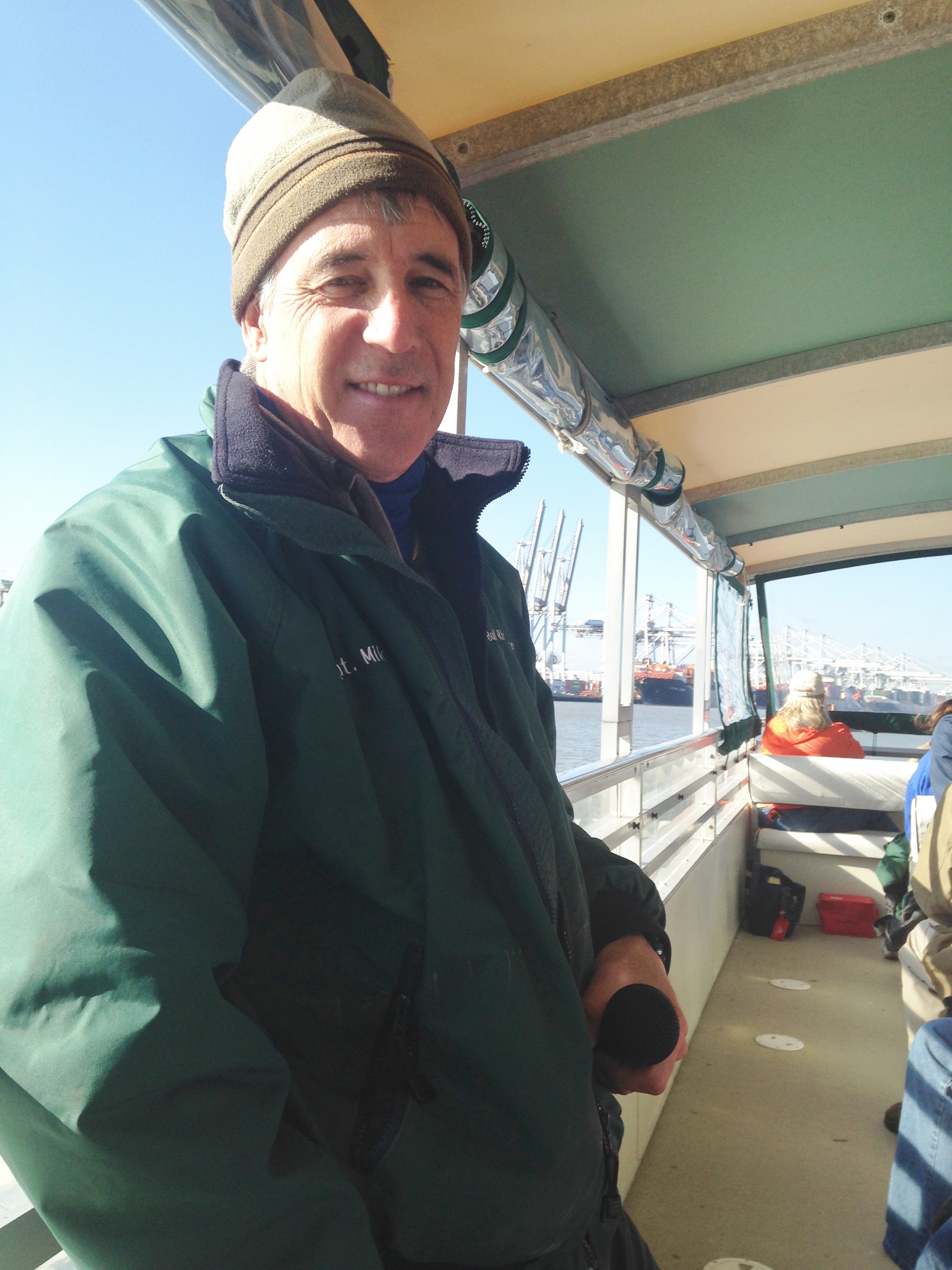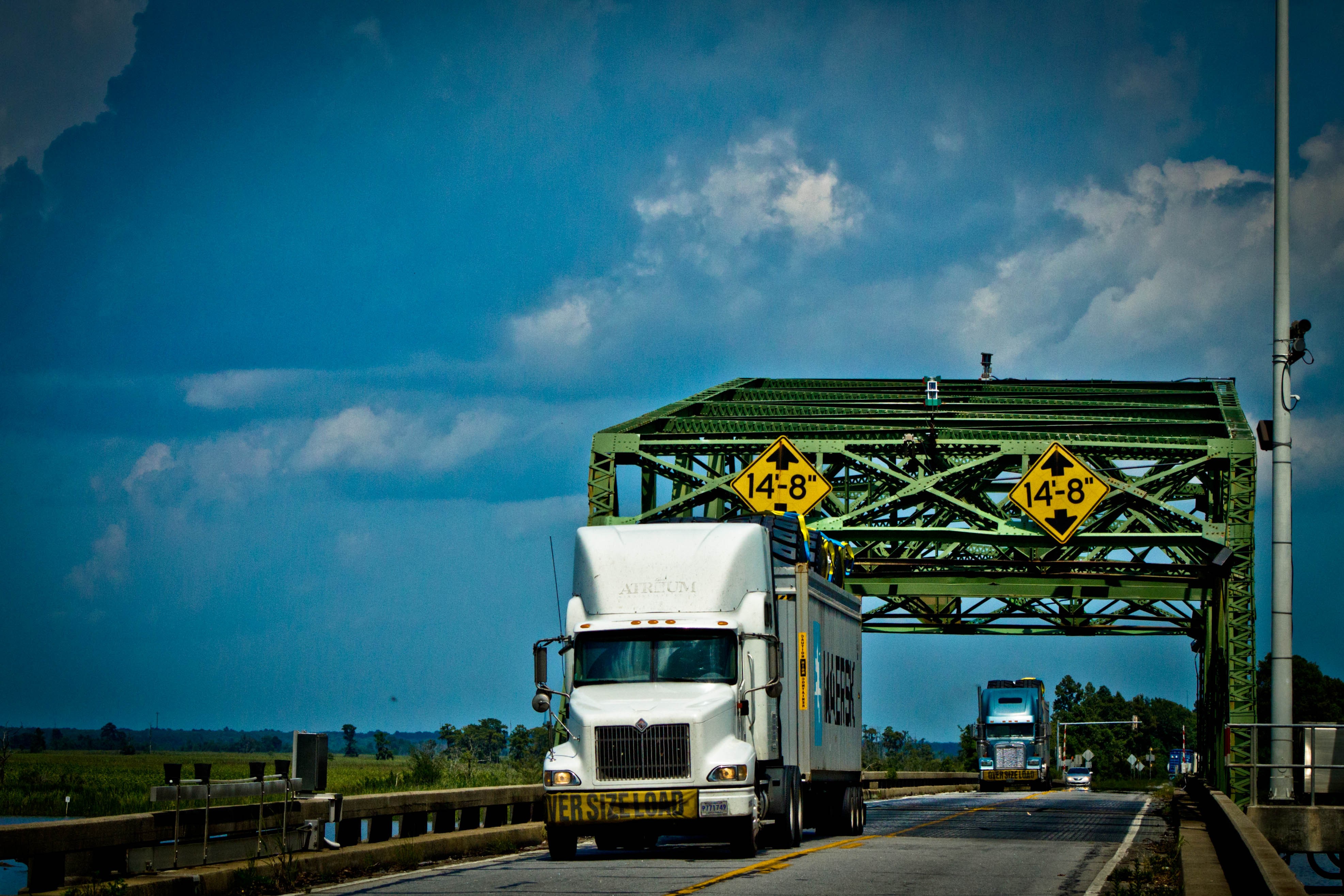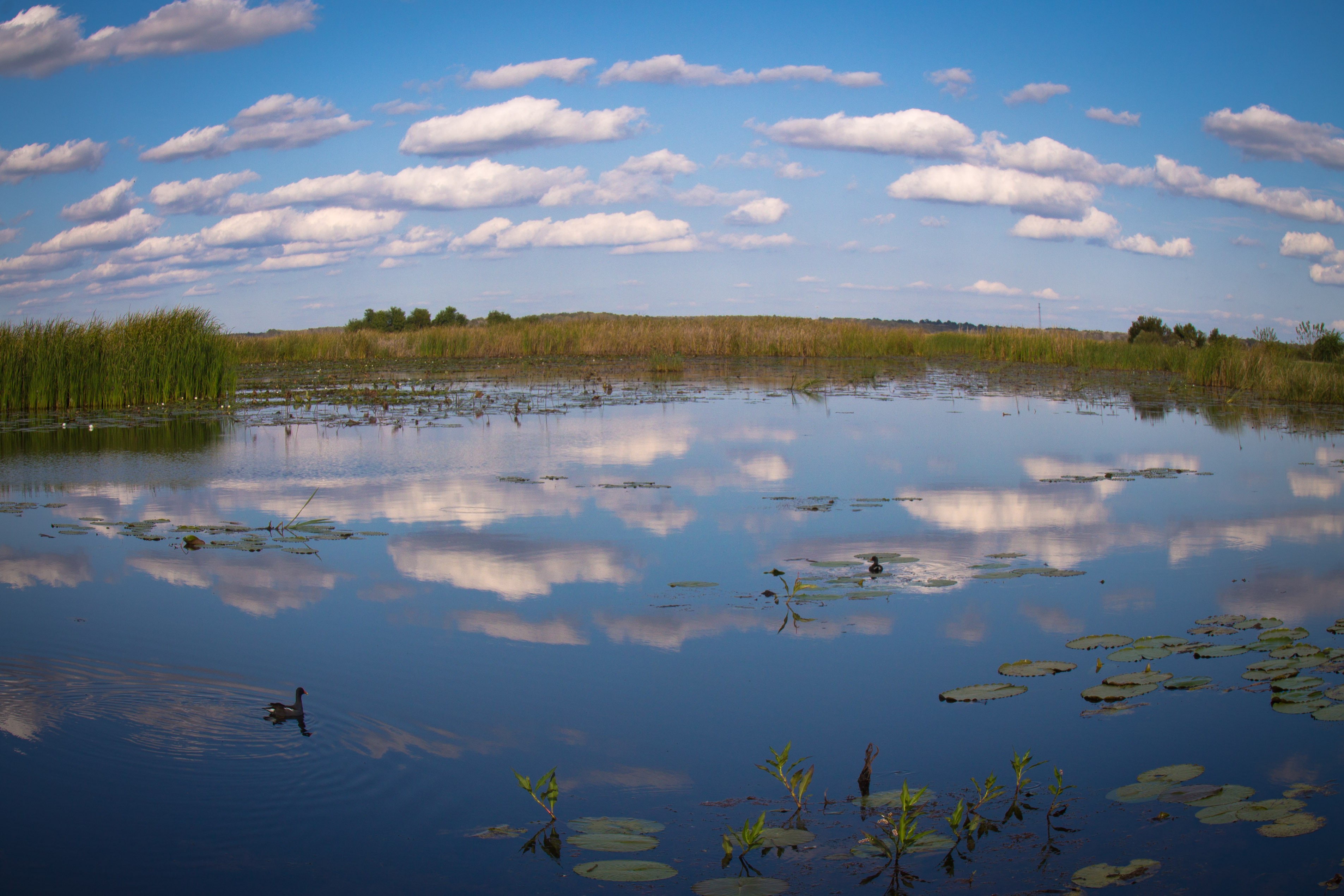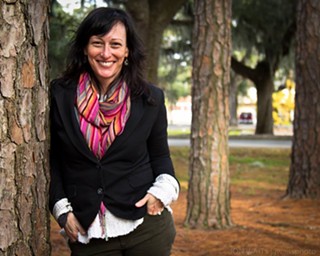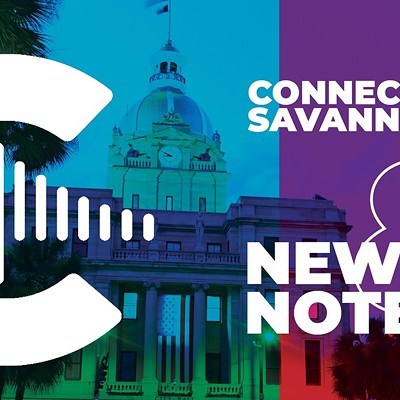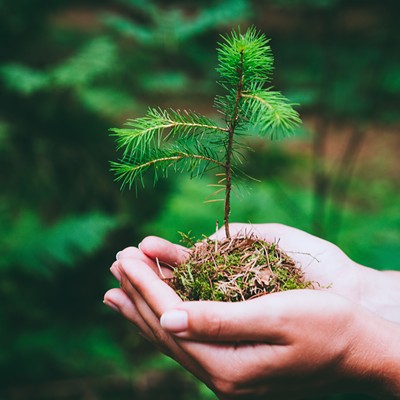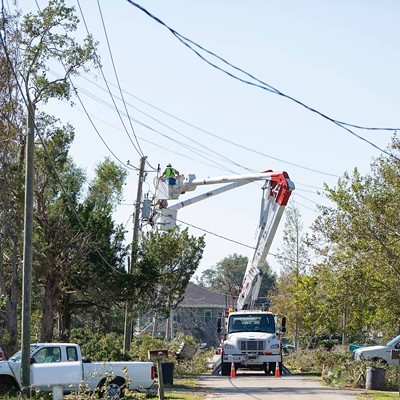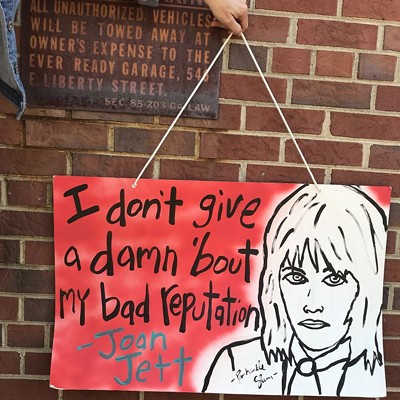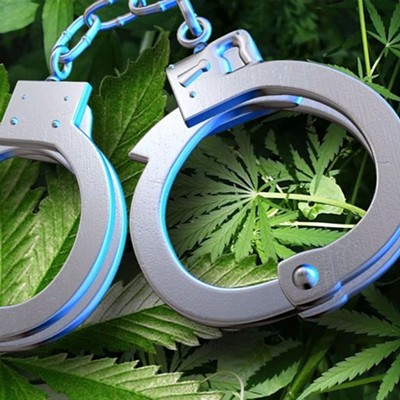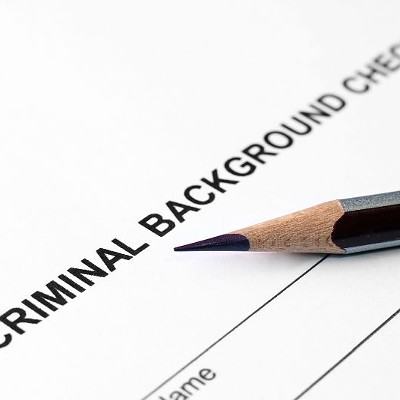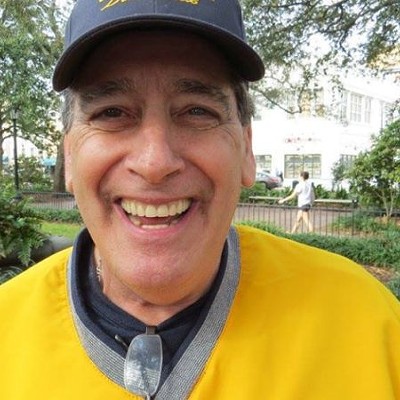DEPENDING ON where you're standing, we either live in a bucolic aquatic paradise or a post-apocalyptic industrial wasteland.
If you happen to be standing on a boat in a certain section of the Savannah River, you don’t even need to move your feet: All you have to do is turn your head.
I experienced this dizzying paradox last week when I hitched a ride with Capt. Mike Neal, who spends his days ferrying folks around local watery nooks and crannies to ogle dolphins and see the sights.
It made sense that I’d run into Capt. Mike at the recent Savannah Riverkeeper Pick ‘n’ Pinch fundraiser, and over a mess of crawfish I’d mentioned that as much hot air as I expend on the topic of the river, I’d never seen the backside of the port and its surrounding industry.
Three days later, I was standing at a boat ramp in Port Wentworth, barely a mile upriver from the Port of Savannah. I was wondering doubtfully just exactly how Capt. Neal’s Island Adventure barge could possibly pass under the water-level Houlihan Bridge when the green metal scaffold swung around like a lazy susan, opening passages on either side. (Tech nerds will appreciate that the Georgia Dept. of Transportation constructed this neat trick of engineering way back in 1922, and the historic passage to South Carolina remains only one of two swing-span bridges still operating in the state.)
The boat chugged through and pulled up for me to crash a private tour of newish Landings residents who had spent the chilly morning tooling around the pretty tributaries of the Little Back and Middle rivers. They welcomed me aboard with shivery hellos and a bag of pretzels, and soon we were chugging down the main channel.
The view got bi-polar fast.
On our left, the Savannah Wildlife Refuge rolled by against a canvas of clouds. I watched a snowy egret alight on a patch of golden marsh, a thick green curtain of oaks and pines behind it.
Off to my right, something flickered in my peripheral vision. Suddenly, I was goggling at a rusty collection of squat tanks and metal towers reflecting the sunlight. Before I could ask, the unmistakable stench of sulphur wafted into the boat, identifying this as the Weyerhaeuser plant, the first of two paper mills along this section of the river.
Old-timers used to call the foul odor “the smell of money.”
One of the Landings ladies, new enough to town to have thus far avoided those occasional early morning inhales that taste like a week-old hot dog, professed shock at the outright noxiousness.
“Oh, that’s nothing!” Capt. Mike laughed. “It used to eat the paint off your car!”
True, air emissions and water effluent have drastically improved since Ralph Nader’s Raiders came to town in the late 1960’s to expose the hideous polluting practices of Union Camp—the other paper mill further downstream now known as International Paper. Their findings were chronicled in a 1970 book, The Water Lords (a fascinating read; go ask The Book Lady to track down a copy) in which author James M. Fallows used the term “aquatic slum” to describe the Savannah River of mid-20th century.
The book inspired radical environmental legislation, and International Paper has theoretically cleaned up its act, though from the back it still looks like an abandoned mental hospital. Here in the 21st century, the factory also gulps more freshwater out of the Floridan Aquifer than any other entity, and the City of Savannah now draws the majority of its drinking water out of—ta da!—the increasingly salty Savannah River.
Is this game fun or what?!
“And here we have the Kraft Plant, named one of the top ten polluters in the U.S.,” announced Capt. Mike cheerfully as we passed the ominous black hills of Georgia Power’s on-demand coal-burning facility. That was followed shortly by the sinister, singed cylinders of Dixie Sugar, where an explosion killed 14 workers and injured 42 in 2008.
I sighed and turned back to my left to admire a cluster of live oaks on a high bluff. If I breathed through my mouth and squinted my eyes just so, it almost felt like we were cruising near uninhabited Wassaw Island. How can the Savannah River swallow more than 5 million pounds of toxic discharge a year and yet still be so breathtaking beautiful?
“It’s always been a river of contrasts,” ruefully explains Riverkeeper Tonya Bonitatibus of the 400-mile flow once known as the Westabou by the area’s long-gone native inhabitants.
While the SRK has a small and growing presence in Savannah, SRK’s operations are based in Augusta, the midpoint between the river’s headwaters in North Carolina and its downstream denouement, which is right here in River City.
Bonitatibus grew up fishing and boating on Lake Hartwell, where Georgia’s Tugaloo River and South Carolina’s Seneca River comingle to become the border between the two states.
“The first couple of hundred miles, the main use of the river is recreation, some of the most gorgeous places you’ve ever seen,” she says.
“Once you get into Augusta, though, it becomes an industrial workhorse.”
It’s a long river with 99 problems, but a lack of drainage ditches ain’t one. There are 48 municipal and industrial outfalls into the river between Augusta and Savannah, spewing a soup of chemical, biological and nuclear wastes—treated, of course, but not anything you’d want to take a bath in. Many of those entities also suck water out of the river, and the “assimilative capacity”—the river’s ability to renew and clean itself—was sold out to industry many decades ago.
In the late 1950s, the U.S. Corps of Engineers straightened the river, cutting through winds and bends to ease shipping transport between the two cities. It shortened the natural path of the river by 78 miles and destroyed countless habitats.
But demand for water traffic between the cities dried up by 1980, and the project is now lamented as one of those expensive, short-sighted, privately-lobbied, publically-paid-for infrastructure projects that seem to plague the Savannah River. (We’ll get to another expensive, short-sighted infrastructure project in a bit.)
“There’s been a very orchestrated, conscious decision among the powers that be to turn the population away from the river,” says Bonitatibus.
After years of mispronouncing her name (it’s Bon-i-TAT-ti-bus), I finally had the chance to meet her at the SRK Pick ‘n’ Pinch at Hogan’s Marina. It was a well-intentioned but woefully under-attended event, given the relevance of the river’s health to our quality of life. More than a few folks lamented how much support the Ogeechee Riverkeeper garnered after the 2010 fishkill and the subsequent lawsuit against King America Finishing.
Not that they begrudge ORK’s success in the least: Many belong to both organizations and cheer the victory that resulted in vigilant water testing and cooperation between the Riverkeeper and the textile plant’s new owners, Milliken & Co. (My husband and I recently spent a gorgeous afternoon kayaking and fishing on the Ogeechee and can attest to its pristine glory. And yes, we ate the fat bass he pulled in.)
But the question remains why the same enthusiasm for saving the Savannah doesn’t blow up many balloons around here.
“I think it’s much easier for people to wrap their minds around the Ogeechee,” muses Bonitatibus. “There’s only the one industry, and people in Savannah know it more as a place where people fish and recreate. Whereas the Savannah, people here can’t imagine it as anything other than industrial.”
Definitely, most of us would rather skinny dip at the sewage plant than swim in the Savannah River. However, we do plenty of recreating on Tybee Island, which we conveniently pretend is not at the mouth of the third most toxic river in the nation but some isolated beach on another planet. (This delusion is clearly helped along by copious amounts of beer.)
What might help the cause is breaking up the vigilance of the river into two sections: SRK has plans to open a Savannah office to address the issues threatening the lower river, namely the Savannah Harbor Expansion Project, the latest in the line of tax-payer funded projects that may just be the blade of marsh straw that collapses its ecological back.
I know. You’re all “when is this woman gonna quit snarkering about the gawddang harbor deepening? It’s happening! Let it go already!”
Well, I can’t. I’m like the guy standing in front of the tanks in Tiananmen Square, only picture me floating in the way of one those post-Panamax ships wearing water wings and one of those stripey old-fashioned bathing suits.
Yes, SHEP may be inevitable, but it’s only because other parties have persistently pointed out the follies of the project that its mitigative caveats now make up more than half its total costs. (Interestingly enough, part of the settlement in the lawsuit that SRK and the Southern Environmental Law Center filed against the Corps includes funding to restore the original meanderings of the river that were mangled in the 1950s.)
Anyway, it ain’t over ‘til it’s over: Despite declarations by the Georgia Ports Authority that shoveling would start this month, it looks like 2014 will end without a contract awarded for the Big Dig or the Hubba Bubblers.
Oops, we’re not supposed to call them “bubblers” anymore:
“Since the dissolved oxygen injection system, also known as Speece cones, does not create bubbles, referring to them as ‘bubblers’ is an error-in-fact and creates a false concept for readers,” U.S. Corps of Engineers spokesperson Billy Birdwell gently chastised in an email.
The last thing I’m here to do is create false concepts; the facts kind of speak for themselves, no? We’re all aware of the logic that shows how the harbor deepening increases the economic viability of the port as it puts the ecological sustainability of the river on life support.
Even without SHEP, the Savannah River might not survive the next decade anyway. Bonitatibus calls it “death by a thousand cuts”:
Near Augusta, Georgia Power currently muscles more than 43 million gallons a day out of the river for nuclear Plant Vogtle, and the Georgia Assembly gave its blessing last week to double that amount for two new reactors. A few miles away, the Savannah River Site leaks radioactive waste into the groundwater while the EPD examines its fingernails.
Down on our end, saltwater intrusion already creeps further upriver every year, evident in lines of ash-gray dead trees. Southern LNG received approval from the feds this summer to export liquid natural gas from Elba Island, which means twice as much LNG moving along the river.
While a proposal to truck LNG through the city was roundly rejected in 2012, the company won’t discount trying again in 2015. Frack that.
I appreciate the necessity of industry, I promise. But I have to ask the question that must occur to everyone who loves where they live and work and can’t bear to see it exploited, the Appalachian farmer whose fields are sludge because the mountain above was blown up for coal, the Masai warrior watching his ancestral lands usurped by Arab businessmen, the Peruvian tribesman forced out of the rainforest by loggers:
Why must profits exist only at the expense of the resources we’re all entitled to share?
As if on cue, Capt. Mike brought us face-to-stern with the mythical monster of a post-Panamax ship. He explained that the big ships have already been calling on the port even without the harbor deepening, albeit lightly weighted.
Y’all, it was big. Stacked 20 stories high with containers of every shade, it’s hard to imagine what it would look like fully-loaded. Even harder to predict what life on the river will be like once they’re passing through every week.
“It’s going to be 20 years before we know the real economic and environmental effects,” said the captain, the brontosaurus necks of the port cranes on one side of him juxtaposed with the green bluffs of the wildlife refuge on the other.
The mood was thoughtful as we drifted under the double fans of the Talmadge Bridge, the warehouses that were the site of last winter’s tire fire giving way to the charms of River Street.
As the barge steered a U-turn, I looked out towards the direction of the sea, trying to reconcile the foul tangle at my back with the beauty that lay just beyond.
I guess the reason why I can’t quit hollerin’ about saving this river is because it’s worth it: The dolphins leaping out of Lazaretto Creek at sunset. The shrimp boats hauling in the day’s catch that still tastes marvelously (miraculously?) delicious. The serenity of the wildlife refuge, where ospreys soar above the tree line and the fragile tidal marsh supports an irreplaceable web of life.
Maybe it’s not too late to make a U-turn on the fate of the Savannah River. It would mean a concerted effort from City leaders to stand up to the wall of polluters along the banks, demand equitable use, and, while we’re at it, insist on a fair cut to Savannahians from every one of those giant ships that comes to call. It would mean the EPD doing its job, issuing permits and enforcing them.
But none of that will ever happen without the passion and persistence of those of us who live at the end of the line.

